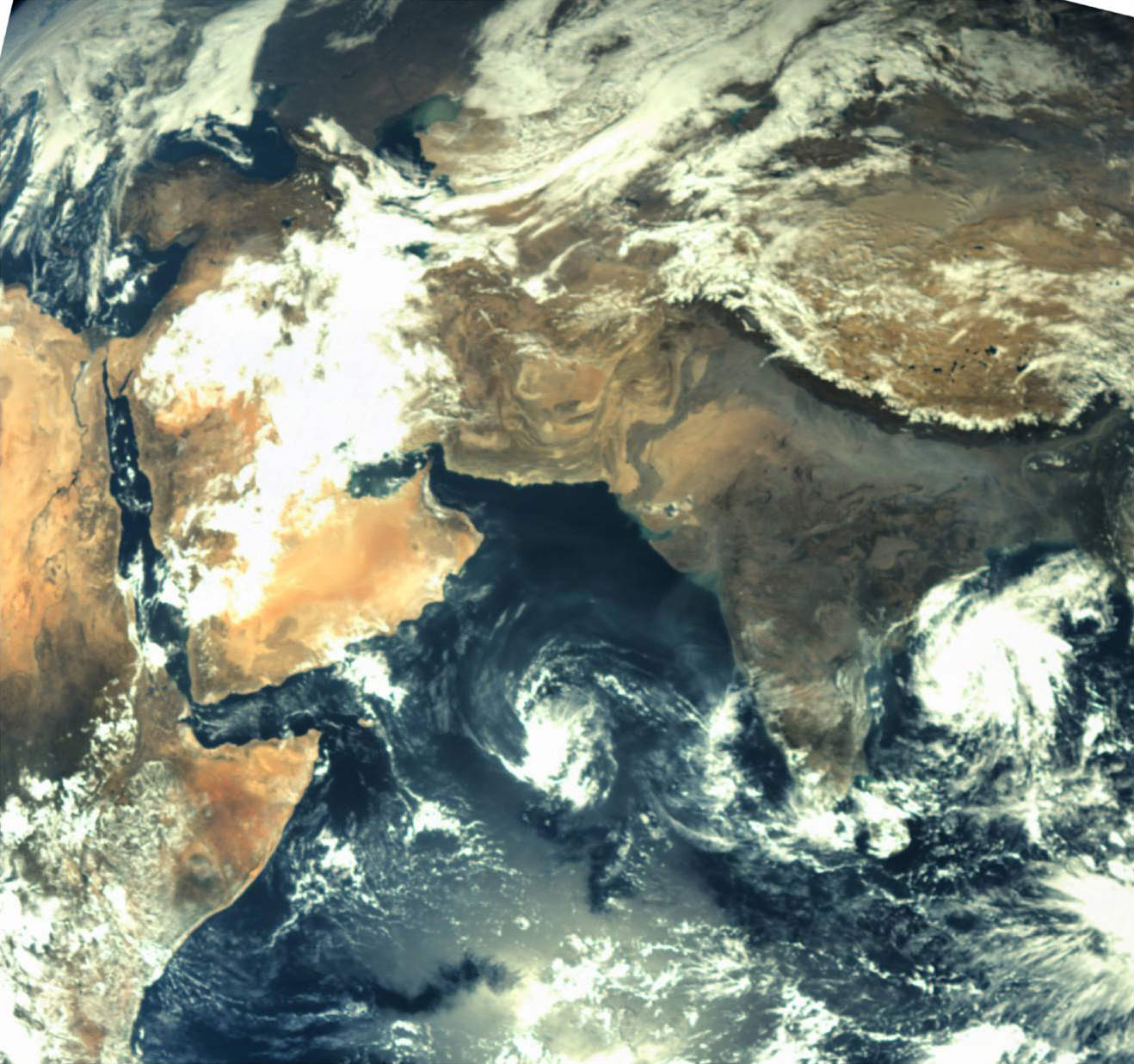

First ever image of Earth Taken by Mars Color Camera aboard India’s Mars Orbiter Mission (MOM) spacecraft while orbiting Earth and before the Trans Mars Insertion firing on Dec. 1, 2013. Image is focused on the Indian subcontinent. Credit: ISRO
While astronomers are trying to figure out which planets they find are habitable, there are a range of things to consider. How close are they to their parent star? What are their atmospheres made of? And once those answers are figured out, here’s something else to wonder about: how many minerals are on the planet’s surface?
In a talk today, the Carnegie Institution of Washington’s Robert Hazen outlined his findings showing that two-thirds of minerals on Earth could have arisen from life itself. The concept is not new — he and his team first published on that in 2008 — but his findings came before the plethora of exoplanets discovered by the Kepler space telescope.
As more information is learned about these distant worlds, it will be interesting to see if it’s possible to apply his findings — if we could detect the minerals from afar in the first place.
“We live on a planet of remarkable beauty, and when you look at it from the proximity of our moon, you see what is obviously a very dynamic planet,” Hazen told delegates at “Habitable Worlds Across Time and Space”, a spring symposium from the Space Telescope Science Institute that is being webcast this week (April 28-May 1).
His point was that planets don’t necessarily start out that way, but he said in his talk that he’d invite comments and questions on his work for alternative processes. His team believes that minerals and life co-evolved: life became more complex and the number of minerals increased over time.
The first mineral in the cosmos was likely diamonds, which were formed in supernovas. These star explosions are where the heavier elements in our cosmos were created, making the universe more rich than its initial soup of hydrogen and helium.
There are in fact 10 elements that were key in the Earth’s formation, Hazen said, as well as that of other planets in our solar system (which also means that presumably these would apply to exoplanets). These were carbon, nitrogen, oxygen, magnesium, silicon, carbon, titanium, iron and nitrogen,which formed about a dozen minerals on the early Earth.
Here’s the thing, though. Today there are more than 4,900 minerals on Earth that are formed from 72 essential elements. Quite a change.
Hazen’s group proposes 10 stages of evolution:
These stages above are about as far as you would get on a planet without life, Hazen said. As for the remaining stages on Earth, here they are:
And the final three stages up to the present day was the emergence of large oceans, a global ice age and then (in the past 540 million years or so) biomineralization or the process of living organisms producing minerals. This latter stage included the development of tree roots, which led to species such as fungi, microbes and worms.
It should be noted here that oxygen does not necessarily indicate there is complex life. Fellow speaker David Catling from the University of Washington, however, noted that oxygen rose in the atmosphere about 2.4 billion years ago, coincident with the emergence of complex life.
Animals as we understand them could have been “impossible for most of Earth’s history because they couldn’t breathe,” he noted. But more study will be needed on this point. After all, we’ve only found life on one planet: Earth.
The STSCI conference continues through May 1; you can see the agenda here.
Some exoplanets have characteristics totally alien to our Solar System. Hot Jupiters are one such…
Stars form in Giant Molecular Clouds (GMCs), vast clouds of mostly hydrogen that can span…
Let’s dive into one of those cosmic curiosities that's bound to blow your mind: how…
The majority of the universe remains unmapped, but we have a potential window into it…
NASA engineers are pressing ahead with preparations for the Artemis II mission unless someone tells…
It’s not uncommon for space missions to be tested here on planet Earth. With the…